Symphonic Chronicles Vol III
Peter Dickson Lopez composer
Lawrence Mumford composer
David Eccott composer
Samuel A. Livingston composer
Tyler Goodrich White composer
Nina Feric composer
Antonín Dvořák composer
Janáček Philharmonic Ostrava | Jiří Petrdlík conductor
Moravian Philharmonic Orchestra | Stanislav Vavřínek conductor
Brno Contemporary Orchestra | Pavel Šnajdr conductor
Strings of the London Symphony Orchestra | Miran Vaupotić conductor
Embracing the same spirit of innovation and artistic exploration that captivated audiences in its previous installments, SYMPHONIC CHRONICLES VOL III unites a diverse assembly of today’s leading composers and performers. This edition offers listeners a variety of themes and moods to explore, from perspectives of an ancient civilization to Croatian folklore, remembrance of those we’ve lost, odes to the tranquility and vastness of our natural world, and more. Performed by several celebrated ensembles, each piece in this Navona Records release lends a fresh perspective and unique voice to the celebrated tradition of classical orchestral music.
Listen
Stream/Buy
Choose your platform
An Inside Look
An inside look at the recording of Tales from Croatia: Fairies at Play and Jure and the Sea – Rhapsody for Orchestra with composer Nina Feric.
Track Listing & Credits
| # | Title | Composer | Performer | |
|---|---|---|---|---|
| 01 | Song of Thirteen Moons: III. Serenade | Peter Dickson Lopez | Janáček Philharmonic Ostrava | Jiří Petrdlík, conductor | 9:57 |
| 02 | In Golden Light | Lawrence Mumford | Janáček Philharmonic Ostrava | Jiří Petrdlík, conductor | 7:53 |
| 03 | Lullingstone: V Nymphaeum et Chi-Rho: I. Nymphs Bathing and Dancing. | David Eccott | Janáček Philharmonic Ostrava | Jiří Petrdlík, conductor | 3:09 |
| 04 | Lullingstone: V Nymphaeum et Chi-Rho: II. Song of the Nymphs | David Eccott | Janáček Philharmonic Ostrava | Jiří Petrdlík, conductor | 2:36 |
| 05 | Lullingstone: V Nymphaeum et Chi-Rho: III. Chi-Rho | David Eccott | Janáček Philharmonic Ostrava | Jiří Petrdlík, conductor | 2:51 |
| 06 | Song for a Rainy Day | Samuel A. Livingston | Moravian Philharmonic Orchestra | Stanislav Vavřínek, conductor | 5:15 |
| 07 | The Four Elements: I. Earth (Intrada Fantasy) | Tyler Goodrich White | Brno Contemporary Orchestra | Pavel Šnajdr, conductor | 4:22 |
| 08 | The Four Elements: II. Water Waltz | Tyler Goodrich White | Brno Contemporary Orchestra | Pavel Šnajdr, conductor | 4:54 |
| 09 | The Four Elements: III. Air – An Elegy | Tyler Goodrich White | Brno Contemporary Orchestra | Pavel Šnajdr, conductor | 8:14 |
| 10 | The Four Elements: IV. Fire Finale | Tyler Goodrich White | Brno Contemporary Orchestra | Pavel Šnajdr, conductor | 4:38 |
| 11 | Tales from Croatia: Fairies at Play | Nina Feric | Janáček Philharmonic Ostrava | Jiří Petrdlík, conductor | 3:26 |
| 12 | Jure and the Sea – Rhapsody for Orchestra | Nina Feric | Janáček Philharmonic Ostrava | Jiří Petrdlík, conductor | 4:41 |
| 13 | Nocturno In B Major Op. 40 | Antonín Dvořák | Strings of the London Symphony Orchestra | Miran Vaupotić, conductor | 7:51 |
Tracks 1-5
Recorded November 21-23, 2023 at Vesmír Concert Hall in Ostrava, Czech Republic
Session Producer Jan Košulič
Session Engineer Aleš Dvořák
Assistant Engineer Adam Janků
Editing & Mixing Jan Košulič
Additional Editing & Mixing Melanie Montgomery (Track 2)
Track 6
Recorded September 22, 2023 at Reduta Hall in Olomouc, Czech Republic
Session Producer Jan Košulič
Session Engineer Jana Jelínková
Editing & Mixing Jan Košulič
Additional Editing & Mixing Melanie Montgomery
Tracks 7-10
Recorded October 3-4, 2023 at The Orlí Street Theatre Studio in Brno, Czech Republic
Session Producer Jan Košulič
Session Engineer Aleš Dvořák, Jana Jelínková
Editing & Mixing Jan Košulič
Additional Editing & Mixing Melanie Montgomery
Tracks 11 & 12
Recorded September 11, 2023 at Vesmír Concert Hall in Ostrava, Czech Republic
Session Producer Jan Košulič
Session Engineer Aleš Dvořák, Pavel Kunčar
Assistant Engineer Adam Janků
Editing & Mixing Jan Košulič
Additional Editing & Mixing Lucas Paquette
Track 13
Recorded July 6-7, 2022 at LSO St Lukes in London, United Kingdom
Session Producer Jan Košulič
Session Engineer Jonathan Stokes, Neil Hutchinson
Editing Lucas Paquette
Mastering Melanie Montgomery
Executive Producer Bob Lord
VP of A&R Brandon MacNeil
A&R Danielle Sullivan, Chris Robinson, Jeff LeRoy
VP of Production Jan Košulič
Audio Director Lucas Paquette
Production Manager Martina Watzková
Production Assistant Adam Lysák
VP, Design & Marketing Brett Picknell
Art Director Ryan Harrison
Design Edward A. Fleming
Publicity Chelsea Kornago
Digital Marketing Manager Brett Iannucci
Artist Information

Peter Dickson Lopez
As an internationally performed composer, Peter Dickson Lopez traces his musical roots to a broad range of influences from his tenure as a graduate student at the University of California at Berkeley, as a Tanglewood (USA) Fellowship Composer, and as recipient of the George Ladd Prix de Paris (1976-78). The eclectic nature of Lopez’s mature style stems no doubt from having worked directly with composers of diverse approaches and philosophies during his early years at Berkeley and Tanglewood: with Joaquin Nin Culmell, Andrew Imbrie, Edwin Dugger, Olly Wilson, Earle Brown at UC Berkeley (1972-1978); and with Ralph Shapey and Theodore Antoniou during his Fellowship at Tanglewood (1979). Even more influential to Lopez’s artistic development was his residence in Paris where he had the opportunity to listen to many live concerts of contemporary European composers as well as to attend numerous events at IRCAM.

Lawrence Mumford
Lawrence Mumford's music, published by eight different companies, has premiered in cities across the country. Movements from his Symphony No. 4 have recently become a part of the broadcast libraries of the largest classical radio stations in Boston, Washington DC, Cleveland, Los Angeles, San Francisco, and other cities, and have been played repeatedly — even being included in two stations’ “Ultimate Playlist.” This music is also available on major streaming services including Spotify, Amazon Music, and Apple Music.

David Eccott
David Eccott lives and works as a peripatetic instrumental music teacher, specializing in piano and brass in his home county of Kent in England. He studied trombone with Denis Wick, former principal trombone with the London Symphony Orchestra, and piano with Robert Collett at the Guildhall School of Music and Drama in London. He has worked as an orchestral freelance trombonist and was an examiner for The Associated Board of The Royal Schools of Music for 23 years. He also composes. His Concertino For Oboe And Small Orchestra and his symphonic poem Rochester Creek: Scenes From PreColumbian Utah for large orchestra have recently won online composition competitions.

Samuel A. Livingston
Samuel A. Livingston was born in 1942, and served from 1966-1967 with the U.S. 4th Armored Division Band. Livingston currently resides in New Jersey and plays the clarinet in a community band, traditional jazz groups, and chamber music groups. As a composer, he is entirely self-taught. His recent (21st century) compositions include works for concert band and several chamber pieces, mostly for wind instruments.

Tyler Goodrich White
Tyler Goodrich White is Professor of Conducting and Composition at the University of Nebraska-Lincoln, where he has served as Director of Orchestras since 1994. Under White’s direction, the UNL Symphony has been recognized as one of America’s outstanding collegiate orchestras. As a composer, White has received commissions from the Atlanta Symphony Orchestra, the Cleveland Chamber Symphony, the National Symphony Orchestra, Lincoln’s Symphony Orchestra, and numerous other organizations. He was awarded a Silver Medal in the 2019–2020 Global Music Awards, and in 2020 he was awarded The American Prize for Orchestral Composition. White currently serves as Composer-in-Residence of Lincoln’s Symphony Orchestra.

Nina Feric
Nina Feric, born in Zagreb, Croatia, began her musical studies at the age of 6. She obtained her Master of Music Degree in Piano Performance and Piano Pedagogy from the Music Academy of the University of Zagreb (Croatia) in the class of Prof. Veljko Glodic, and continued her studies at Postgraduate Course in Music Disciplines at DAMS Bologna (Italy).
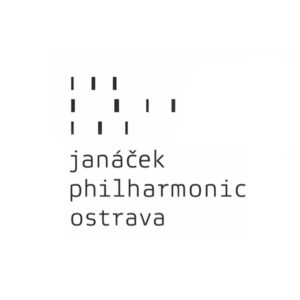
Janáček Philharmonic Ostrava
The Janáček Philharmonic is a world-class symphony orchestra based in Ostrava, Czech Republic and an emerging figure on the international performance scene. With over 100 top-level musicians, the orchestra aims to introduce unique, quality repertoire while showcasing their own recognizable sound.
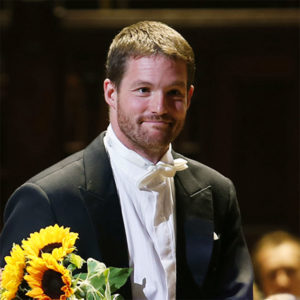
Jiří Petrdlík
Jiří Petrdlík (b. 1977) is appreciated as one of the most respectable conductors of his generation. He studied piano, trombone, and conducting — 1995–2000 at Prague Conservatory, and 2000–2005 at Academy of Performing Arts Prague — with Hynek Farkač, Miroslav Košler, Miriam Němcová, Radomil Eliška, and Tomáš Koutník, and took part in the masterclasses of the New York Philharmonic Principal Conductor Kurt Masur and the BBC Philharmonic Principal Conductor Jiří Bělohlávek. Petrdlík also successfully took part in several competitions, including the Donatella Flick Conductor Competition in London.
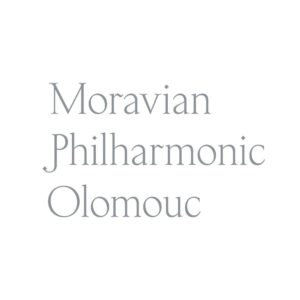
Moravian Philharmonic Orchestra
The Moravian Philharmonic Orchestra is one of the foremost and oldest symphony orchestras in the Czech Republic. It is based in the historical capital of Moravia, the city of Olomouc, and has been a leader of music activities in the region for the past 70 years. Its artistic development was directly influenced by distinguished figures from the Czech and international music scene.
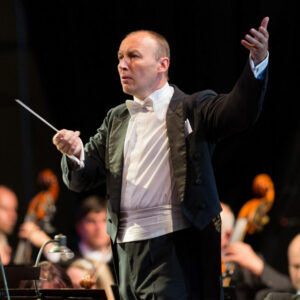
Stanislav Vavřínek
Stanislav Vavřínek is one of the most prominent Czech conductors and has been Chief Conductor of the Czech Chamber Philharmonic Orchestra Pardubice since 2018. Having graduated from the Conservatory in Brno where he studied flute and conducting, he continued his education at the Academy of Performing Arts in Prague. Subsequently, he also took master classes with Roberto Benzi in Switzerland, culminating with a concert in which he conducted the Biel Philharmonic Orchestra.

Brno Contemporary Orchestra
The Brno Contemporary Orchestra (BCO) was founded in 2011 with the aim of performing the world’s contemporary music and selected 20th-century works in Czechia and Czech music throughout the world. The ensemble includes top-level professional musicians employed in the leading Czech orchestras. It draws on a large pool of permanent collaborators who perform in various lineups according to the needs of each project.

Pavel Šnajdr
Pavel Šnajdr is a Czech conductor and composer. He is a graduate of the Janáček Academy of Music and Performing Arts (JAMU), Brno in composition (which he studied with Alois Piňos) and conducting (with Emil Skoták). Beyond working with symphony orchestras, he has been engaged by music theatres including the J.K. Tyl Theatre in Pilsen, the Prague State Opera and the Moravian Theatre in Olomouc, and currently conducts opera at the National Theatre in Brno.

London Symphony Orchestra
Widely acclaimed by audiences and critics alike, The London Symphony Orchestra was named by Gramophone as one of the top five orchestras in the world. A world-leader in recording music for film, television, and events, it was the official orchestra of the London 2012 Olympic and Paralympic Games ceremonies, memorably performing Chariots of Fire on stage in the opening ceremony, conducted by Simon Rattle and with Rowan Atkinson.
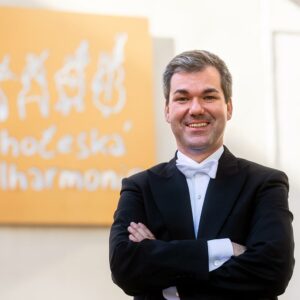
Miran Vaupotić
Acclaimed as “dynamic and knowledgeable” by the Buenos Aires Herald, Croatian conductor Miran Vaupotić has worked with eminent orchestras including the London Symphony Orchestra, the Royal Scottish National Orchestra, the Berliner Symphoniker, the Russian National Orchestra, the Slovak Radio Symphony Orchestra, the Prague Radio Symphony Orchestra, the Budapest Symphony Orchestra MÁV, Orchestre de Chambre de Genève, the Cairo Symphony Orchestra, Orquesta Sinfónica Nacional Argentina, and others, performing in major halls around the globe such as Carnegie Hall, Wiener Musikverein, Berliner Philharmonie, Rudolfinum, Smetana Hall, Victoria Hall, Forbidden City Concert Hall, Shanghai Oriental Art Center, Dubai Opera, Tchaikovsky Hall, International House of Music, CBC Glenn Gould Studio, and more.
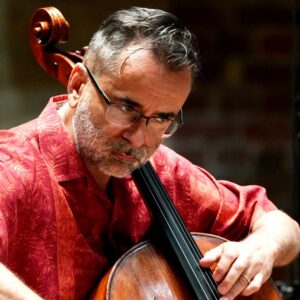
Ovidiu Marinescu
Ovidiu Marinescu is internationally recognized as a cellist, composer, conductor, and educator. He has performed at Carnegie Hall, Weill Hall, Merkin Hall (New York), the Great Hall of the Moscow Conservatory, Holywell Room in Oxford, Oriental Art Center in Shanghai, and has appeared as soloist with the London Symphony, New York Chamber Symphony, the National Radio Orchestra of Romania, Moscow Chamber Orchestra, Helena, Great Falls, Portsmouth, and Newark Symphonies, Southeastern Pennsylvania Symphony Orchestra, Cleveland Philharmonic, Limeira Symphony in Brazil, Orquesta de Extremadura in Spain, and most of the professional orchestras in his native Romania. The album LONDON CELLO CONNECTION features Marinescu and London Symphony Orchestra in eight newly commissioned cello concertos by North American composers.


